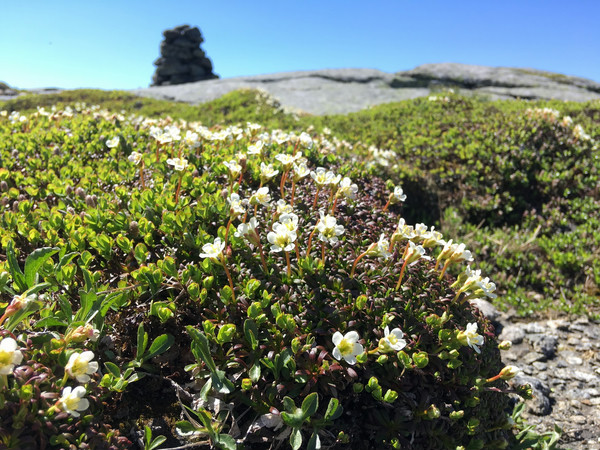
Islands in the Sky: Alpine Flowers and Climate Change
Investigate changes in Alpine plant species in response to Climate Change.
- Ongoing
More Information
In the United States, alpine environments located above the trees on mountain peaks provide important habitat for Arctic tundra plants. Unique species grow under extreme conditions within these isolated “islands in the sky” which are rarely found elsewhere south of the Arctic circle. Alpine plants’ reliance on these high-elevation environments also makes them especially vulnerable to climatic change, which can dramatically impact the area and ecological functioning of alpine communities.
To understand how alpine plants are responding and adapting to their changing climate, the New York Botanical Garden (NYBG) and Appalachian Mountain Club (AMC) have teamed up with citizen scientists around the world to track geographic distributions and seasonal changes in these alpine species. Since 2004, AMC has been monitoring the timing of plant seasonal events like flowering and fruiting in conjunction with weather conditions. This is the study of phenology. Long term phenology data is a useful tool to quantify plant responses to climatic change and to identify which species might be most vulnerable to a shifting climate. To understand mountain phenology, researchers need a lot of data from different mountain ranges, elevations, and from many points in time. Fortunately, using herbarium records from the New York Botanical Garden, AMC researchers will be able to continue this investigation using historic records of alpine species collected during the past 200 years.
This is where citizen scientists come in! Our researchers need lots of help to collect data from recently digitized herbarium records of alpine species and other mountain plants. Specifically, we need help documenting when, where, and by whom each historic plant specimen was collected from the wild. Anyone with a computer and access to the internet can participate in this project by joining our virtual expedition on the Notes from Nature crowdsourcing platform. From there, you can view images of preserved plant specimens, interpret and transcribe key details from their collection labels, and report directly to scientists at the AMC and around the world who will use your data to understand and help protect these unique alpine plants.
While hiking in alpine areas, you can also provide valuable data for this project by capturing pictures of flowering species along the trail. The AMC is tracking current and future effects of climate change by gathering flowering and fruiting time data with the help of hikers with the Northeast Alpine Flower Watch project on iNaturalist (https://www.outdoors.org/conservation/climate-energy/alpine-flower-watch)
Ticket Required: No
Minimum Age: 13
Languages: English
